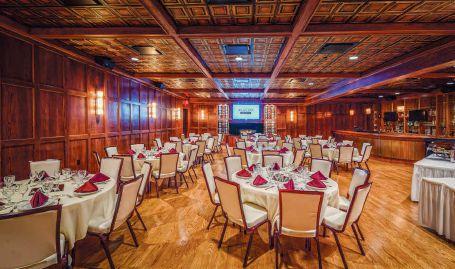MOVING
AHEAD
PROJECT TUNDRA KEEPS MOVING FORWARD, RECEIVES $9.8 MILLION FEDERAL GRANT



MOVING
PROJECT TUNDRA KEEPS MOVING FORWARD, RECEIVES $9.8 MILLION FEDERAL GRANT



Yo uwan ttoc re at eane nt er ta inm en td es ti na tio nt ha tkee ps pe op le te ed up fo rm or e— Li ke Gr ea tS ho ts at th eS an fo rd Sp or ts Co mple x, ay ea r-ro un d, 54 ,0 00 -s quar e- foo t, 3- fl oor go lf ex perie nc ew it hah ea te di nt er acti ve drivin gr ange ,r es ta uran ta ndlo unge ,a nd the Sa nf or dP OW ERGolf Ac ade my.Todos o, yo un eed pa ssion at el ea de rs hi p, ho le -i n- one id eas, an dJ LG Arch it ec ts .R ea dm or ea bo ut Gr ea tS ho ts at jlgar ch it ect s. co m/Gr ea t- Sh ots
Yo uwan ttoc re at eane nt er ta inm en td es ti na tio nt ha tkee ps pe op le te ed up fo rm or e—

NORTHDAKOTA'S LIGNITEISDIFFERENT THANOTHERCOAL.


WHICHALLOWSUSTO THINKOUTSIDETHE BOXONTHEFUTUREOF OURINDUSTRY.
SOWEASKED, WHATIFOURPOWER PLANTSCOULD CAPTURECARBON DIOXIDE?

CARBONCAPTURE ISPARTOF TOMORROW'SALL OFTHEABOE ENERGYSTRATEGY learnmoreatbit.ly/NDccus

WECOULD LOWER EMISSIONS CREATEOBS.
RIGHTHERE INTHE MIDWEST.
At Xc el Energy,webelieve the future is carb on free.T ha t’s whywe’re work ingtoward reduc ingc arbonemissions more than 65%by2020.

Learn moreat xc elenergy.c om/C leanEne rgy.






















DAKT r o NICS HAS m A D e S ome o F TH e b IGG e S T AND br IGHT e S T b IG SC ree NS IN TH e W or LD. TH e S o UTH DAK o TA C om PANY D oe S ever Y THING F rom TH e GIANT SC ree N HUNG IN TI me S S QUA re T o HIGH SCH oo L SC oreb o A r DS. b UT TH e C om PANY IS ALWAYS evo Lv ING AND be C om ING be T T er AND be T T er . PAG e 20. I m A G e : DA KT r o NICS
FULL STe Am AHe AD
vIeWING vACANT SPACe S DIFFereNTLY
mINNKoTA PoWer HAS beeN CoLLAborATING WITH THe eNerGY AND eNvIroNmeNTAL re Se ArCH CeNTer To CoNTINUe WorK oN ProJeC T TUNDrA
PHoTo bY: KArI SUeDeL, eerC

AND AWArD WINNer S IN THe reGIoN.
HAS beeN NAmeD ASSISTANT vICe PreSIDeNT For INTerNATIoNAL AFFAIrS AT SoUTH DAKoTA STATe UNIverSITY.

ree D e . re Y m AN
J o N STAUFF HAS beeN NAmeD eXeCUTIve vICe PreSIDeNT oF reGIoNAL DeveLoPmeNT AT ALTrU.

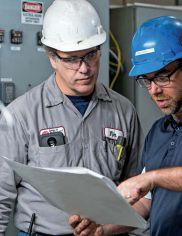

Fi na nc ia l insecu rity ca n lead to st ress, lowered product iv it y, and ot her issues for your employees Introduc ing MY AL ERUS, an on linefi na nc ia l gu idance tool that ca n help your employees ma ke better fi na nc ia l decisions. Whet her it is savi ng for reti rement, ma ki nga plan to reduce debt, or ma xi mi zi ng health savi ngs benefits your employees ca n now ta ke cont rol of thei rfi na nc ia l futu re.

St ar t yo ur co mp an y’s pa th to fi na nc ia l co nf idenc e at MYAL ER US .com .



Marco’sCloudServiceswillgiveyour businesstechnologytheTLCitneeds. Findoutwhatyourtechnologycould besayingat marconet.com.




“Finally. Atechnicalteam whounderstandsmy complex love language.”
At Bobcat, they use the word acceleration – not in the traditional sense, but in a catchy way that touts the company’s forward-thinking direction.
The Bobcat Acceleration Center is where the company tests equipment in an environment that replicates real-world applications. As our reporter notes in a story in this month’s edition of Prairie Business, it’s akin to a sandbox – but for adults. The massive facility allows engineers and others to see machinery tested in a controlled environment.
The Acceleration Center, which opened in 2014 as part of a $28 million expansion at the Bismarck facility, allows advanced product development, streamlining the process and helping Bobcat strengthen its position as an industry leader.

In Fargo, the downtown skyline is seeing a new addition that will serve as the corporate offices for R.D. Offutt Co., along with offering additional office, hotel and residential space. It’s part of the ongoing development of Fargo’s downtown, which has been transformed from a sleepy neighborhood a few decades ago to a bustling business district today.
Block 9 – being developed via the partnership of R.D. Offutt Co. and Kilbourne Group – takes that impressive transformation to a new level, both literally (the building is 18 stories tall) and figuratively.
“We want to have an ‘18-hour city,’ which means downtown, you can get a cup of coffee early in the morning, have a drink or late dinner in the evening, and it’s energetic and bustling and lots of people all day and all evening long,” Keith Leir, vice president of development and construction for Kilbourne Group, told Prairie Business earlier this year.
In Grand Forks, there’s a new hospital rising in the heart of the city. Groundbreaking on the new Altru Health System facility began in June, starting in earnest a project that will see a new seven-story, 528,000-square-foot health center in Grand Forks.
Expected to be completed in 2022, Altru is constructing the facility based on its “Hospital in the Park” concept. Gone will be the boxy hospital of the past, replaced with a center that will better take advantage of the area’s park-like setting, with natural light employed throughout. The $305 million project will expand surgical and medical services and bring the hospital’s technology up to date. It will be a healthcare game-changer in Greater Grand Forks and throughout the northern Red River Valley.
Each October, Prairie Business highlights a particular construction project in the Dakotas and western Minnesota. This month, we tell readers about the Bobcat Acceleration Center, but the feature story could have included so many impactful and important projects that are underway throughout our region. All of the communities within our footprint likely have their own great construction story to tell.
In Grand Forks, it’s a $305 million hospital. In Fargo, it’s the $117 million Block 9 project. In Bismarck, it might be the new six-story First International Bank & Trust building.
And in the dozens upon dozens of smaller towns throughout the region, the projects might be smaller – a new school, or community center, for instance –but on a per-capita basis, they are equally impactful nonetheless.
The point is that construction is progress, and progress is happening in so many of the places covered by Prairie Business.
To borrow the word used so well by Bobcat, it’s more than progress. It’s acceleration.
PU b LISH er KORRIE WENZEL
AD DI re CT or STACI LORD
e DIT or SYDNEY MOOK
CI r CULATI o N m ANAG er BETH BOHLMAN
LAY o UT D e SIGN SARA SLABY
ACC o UNT m ANAG er S NICHOLE ERTMAN
Prairie Business magazine is published monthly by the Grand Forks Herald and Forum Communications Company with offices at 375 2nd Avenue North, Grand Forks, ND 58203. Subscriptions are available free of charge. Back issue quantities are limited and subject to availability ($2/copy prepaid). The opinions of writers featured in Prairie Business are their own. Unsolicited manuscripts, photographs, artwork are encouraged but will not be returned without a self-addressed, stamped envelope.
SU b SC r IPTI o NS
Subscriptions are free www.prairiebusinessmagazine.com
ADD re SS C orre CTI o NS Prairie b usiness magazine b ox 6008 Grand Forks, ND 58206-6008 b eth b ohlman: bbohlman@prairiebusinessmagazine.com
o NLIN e www.prairiebusinessmagazine.com

PRAIRIE BUSINESS is looking for young professionals who are making significant impacts in their chosen profession, industry and communities. Nominees can be entrepreneurs, industry experts, executives, nonprofit, or community leaders. Previous honorees have included business owners, patent holders, professors, venture capitalists, corporate executives, economic developers and nonprofit directors.
The nomination form is available on the magazine’s website, prairiebusinessmagazine.com
Nominations will close on Wednesday, October 16, 2019. Recipients of this year’s award will be announced in the December 2019 edition of Prairie Business Magazine.

Think of it as a sandbox — for adults.
Bobcat’s Acceleration Center, in Bismarck, is where the company develops and hones the machines trundling through the dirt at construction sites across the country. In a company-produced video, Bobcat staff tout all the things the acceleration center helps them do, set to footage of big equipment rolling across the dirt in a 35,000 square-foot indoor dirt space facility.
Excavators are compared one after another digging and turning right up against a concrete wall, or rushing across the dirt side-byside. There’s scribbling whiteboards about attachments, clamps, backfill and the like — and a sketch of an excavator arm. The dirt itself, employees boast, is a perfectly uniform mix built for test purposes.
The center itself is a $28 million expansion of an existing location in Bismarck, with indoor and outdoor test areas, office space and more The project broke ground in 2013, opened in 2014, and turning out new equipment soon after. It has more than 200 employees, a corporate spokesperson said.
One of its earliest accomplishments, said Matt Sagaser — the center’s director — was an update on a mini track loader called the MT85. More or less the size of a riding lawnmower, it runs on a pair of treads and is touted by the company as an increasingly nimble way to manage small jobs. On the company’s website, it’s shown handling small-scale work like moving dirt or carrying a wooden pallet stacked with gear, with an operator standing on the back to ride and drive.
“(Designing and building) a product typically takes around two to two and a half years, all the way up to four or five years, depending on the size of the product and the complexity of the product,” Sagaser said. “We started the design of this … in February, and we went into full production on that product in November. All together it was right around nine months.”
It’s exactly the kind of “acceleration” in product development that Bobcat officials were seeking with the center. And it’s the kind of development that company leaders have hoped not only streamline
continued on page 14


continued from page 12
the way it brings its products to market, but one they’ve hoped since its inception would build a stronger North Dakota workforce, drawing engineers from North Dakota’s top schools.
Bobcat’s roots go back to the late 1950s and the invention of a small front-loader for an upper Midwest farmer trying to clean out the upper levels of his barn — but lacking the lightweight, nimble equipment to do it. It’s since grown into an international brand with a significant presence in North Dakota. Its North American headquarters are in West Fargo, and it has a manufacturing presence in Gwinner, Wahpeton, Bismarck and across the Minnesota border in Litchfield. There are sales and manufacturing sites in Europe and Asia, and a “proving grounds” in Arizona.
Being a global company means it’s often beholden to global market forces. Trade tensions that drive up the cost of steel do the company no favors, as then-company president Richard Goldsbury told the Wall Street Journal last year, citing concerns about Japanese competitors’ access to less expensive steel and a competitive marketplace edge.
“You get a step forward and then you have to take two steps back because of the tariffs,” Goldsbury told the newspaper.
But a year later, Sagaser downplays those concerns, especially in the context of the work engineers and other staff are doing in Bismarck.
“As we look at the impacts the industry sees from all different types of variables, whether it be political, or industry-related with interest rates or what have you, prices fluctuate and change all the time,” he said. “Whether it’s the parts we buy … or the parts we make with other components that we purchase ...We’ve been dealing with it for 60 years, and we don’t expect it to ever change.”
Besides an ever-present push to expand its line of products, Sagaser said many of the new items that the center is working on help make their equipment “smarter.” Just as the automotive industry is loading up its equipment with new features, Bobcat wants to take its products in the same direction.

“Part of our new loaders that we’re launching in the near future…will have a display that has the ability for the customer to press a button to interact with their dealer, or with another entity that works on that connection of what that machine needs, or what that machine’s problems are,” Sagaser said. “Versus a beeping noise that might have been there in the past, or an alarm code of some sort. Just smart machines.”
Stacey Breuer, spokeswoman for the company, pointed out that it’s something that truck owners going to job sites expect.
“Our goal is to make our equipment smart like the car industry is making cars smart. But we feel we can do it faster and better,” Sagaser said. “We’re only driving four miles an hour in the dirt, and we’re doing very specific jobs in the dirt, or with attachments to move snow, typically, versus driving 75 miles an hour down the highway.”
In the next five years, Sagaser said the acceleration center is expected to “do more” with its presence, growing within the space it has to tackle more and more.
“Over the past five years, we’ve added more than 50 professional employees,” Sagaser said. “Although we’re not expanding the building, we’re expanding our environment within the building, to make sure we have all those key elements of innovation to just satisfy that need of collaboration.”




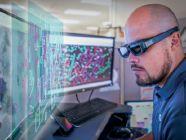





 By Olivia Hunt
By Olivia Hunt
Studies show that STEAM-related topics need to be introduced to children at the elementary level. STEAM (Science, Technology, Engineering, Art, and Math) is the academic campaign that focuses on introducing curriculum based on these topics to early childhood learners through high school.

The Pew Research Center reports that while the STEAM job market has grown drastically since 1990, much faster than other job markets, there is a shortage of employees to fill those jobs. Only one in five STEAM students felt their K-12 education prepared them, yet 78 percent of college students say they decided to study STEAM in high school or earlier, and 21 percent decided in middle school or earlier, according to Harris Interactive.
IMAGES: Bolton & Menk
continued on page 18


No matterwhatyoursizeorindustry, VaalerInsurance cancreate acustomized risk management programthatallows youtoconcentrateonyourbusiness.



continued from page 16
STEAM topics are not frequently written about in children’s books and are charting new territory for children in the 6- to 12-year-old age range. So, with the goal of increasing awareness, especially by a younger audience, of the professions in the STEAM industry and the benefits these fields provide to the public, a regional engineering firm, Bolton & Menk has developed a children’s book series.
What started as a standalone tool used to partner with communities hosting the Smithsonian Waterways Traveling Exhibit, has snowballed into a seven-part series dedicated to teaching children about different areas of STEAM. Bolton & Menk’s first book, “Walter the Raindrop, A Water Cycle Story,” was developed and handed out in conjunction with children’s activities being offered during the waterways exhibits. Seeing that the first book was able to engage children, the idea grew, and the firm saw the need to raise awareness and understanding of career opportunities in STEAM.

Bolton & Menk began to approach staff within its various work groups to develop additional stories. The purpose of the project evolved into a STEAM effort – to develop a series of children’s books that promote reading and education about a variety of careers in the STEAM field.
As a result, this book series has the potential to promote diversity in the associated professions that make up STEAM. The books introduce children to the AEC (architecture, engineering, construction) industry and demonstrate construction, environmental, and social issues landscape architects, planners, and engineers solve. These books share technical information in a clear and concise manner for children to understand and relate to. They broaden a child’s perspective of the world, enhance their knowledge of the built-environment, and bolster critical and creative thinking skills.

“Our mission is to make kids real-world ready. These books show kids a realistic future in a medium that is relatable, accessible, and fun,” said first-grade teacher, Lori Briggs.
Bolton & Menk released a seventh book in 2019 and have plans to release two more by the end of the year. Creating this book series has been a fun way for the firm to get a new generation involved in STEAMrelated fields. Getting children excited about STEAM fields at a younger age opens them up to even more possibilities of what they could grow up to be. Check the series out at www.bolton-menk.com/library.






 By Sam Easter
By Sam Easter

Daktronics is a company that makes some of the very biggest — and brightest — things the world sets its eyes on.

The giant screen hung in Times Square? Daktronics. That hundredfoot screen in Moscow? That’s them, too. And so it goes for a few of the smaller things, too, from a sign at the McDonald’s in New Haven, Ind., to a scoreboard at Minnesota’s Hayfield High School.
The Brookings, S.D., company is a big player in the digital signage game, with an early September market capitalization of about $335 million. It was founded in 1968 by two South Dakota State University professors, delivering an electronic voting system for Utah legislators just two years later. But 1974, the company had tackled wrestling scoreboards, a time and temperature display for a South Dakota bank, and built the first building on what’s still its campus in Brookings.
“If you think of the industry, we’ve been in this general business for 50 years,” said Reece Kurtenbach, the company’s president and CEO. “It’s changed from being pretty basic messaging through light bulbs and some reflective elements to being really high-resolution, high-quality photo reproduction and video reproduction.”
Along with those changes, the company’s size has grown, too. Once the brainchild of two professors, Kurtenbach says most of the company’s competition is now in China. And while the company’s products were once much more disparate — like a scoreboard versus an over-the-road traffic display — now a lot of what the company produces is starting to converge together, Kurtenbach says. What goes in an airport, or in a stadium or out near shopping is increasingly similar.
continued on page 22
continued from page 21
“We have to be better in many ways. An organization rarely is static and doesn’t change, and so we’ve seen ourselves growing and changing with our business. We understand more about how to build displays, certainly high-resolution displays,” Kurtenbach said. “Most of what we do is scalable, so you could build something quite small to something that would fill up a wall or a side of a building — so that’s something that we had to learn and do. And we have control systems that help our customers in the different areas that they are playing, that allows them to get the right message at the right time at the right place.”
Some of its largest products are in arenas. Kurtenbach recalls the installation of a giant “oculus” display at Mercedes-Benz Stadium — where the Atlanta Falcons play — as an example of both the scope and precision of some of its newest projects. Commercial Integrator magazine reported in January, days ahead of Super Bowl LIII — played in Atlanta — that the company would have six technicians at the stadium making sure things were running smoothly.



Kurtenbach describes it as a monolith — roughly 60 feet tall and more than 1,000 feet around, and needed to be installed without any unsightly seams or gaps “with precision within inches.”
“There’s always a thousand details in something like this, and the myriad of technical details that go with it,” he said. “How do you solve each one of those little problems? Getting it up and in place and installed, there’s always unique pieces about every site and then, of course, now that it’s there, they want to use it, and so then they need to turn it on and have it run and have it, once again, right image at the right time at the right place.”
The company is also behind what it claims is the largest center-hung video board in college hockey, newly installed for the University of North Dakota in Grand Forks ahead of the 2019-20 season. It’s about 34 feet high and 15.5 feet wide, dwarfing the display it replaced.

But even as the company’s technology changes, so, too, is the market it’s reaching. Kurtenbach points out that print advertising, as well as radio and television spots, are giving way increasingly to digital ads that can run on the big-screen products that Daktronics produces. MarketingCharts reports that the 2016 TV advertising market was $15 billion smaller than its online counterpart, and online is forecasted to be half again as large as television by 2021. While Daktronics products are very much rooted in the analog world, it’s innovation in digital advertising that helps boost the demand for the company’s digital platforms.

“If you walk through a venue, whether it’s a sports venue or public venue or a retail venue, you’ll see digital screens in places that, 20 years ago, you wouldn’t have imagined seeing them,” Kurtenbach said. “And we believe that will continue on if people get more used to seeing digital content and expect it and it’s a way for brands to reach people that they might miss otherwise.”
The company celebrated its 50th anniversary last year, and Kurtenbach said there are a few key ways the company is looking to the future. At the top of the list is technology.
“You might call ‘higher resolution,’ the pixels that create an image are getting closer together and more reliable, and so we’re working on those technologies to be able to do that. And we’ve had some recent successes,” he said. “As you start to see screens in more and more places, they all need to somehow have content delivered to them and through them, so making it easy and intuitive and effortless to have content streamed up onto the right place at the right time, those are the two areas we spend most of our development with.”
“As an organization, this idea of change is real. The world is changing, and we need to change with it,” he added. “How can we be fast to change and receptive to change so that we’re out in front of it and not drug into it in an uncomfortable way?”












 By Kasey Allen and Matti Roinila, AIA – ICON Architectural Group
By Kasey Allen and Matti Roinila, AIA – ICON Architectural Group
A recent study found that in 2018, over 100 million square feet of retail stores were vacated. This is largely attributed to consumers increasingly favoring online shopping.
Since 2009, online retail has accounted for an increasing percentage of total retail sales and in 2018, it accounted for 14.3 percent of total retail sales, up from 13 percent in 2017. Struggling retailers like Kmart, Sears and J.C. Penney — all known for big stores — have been closing dozens or even hundreds of locations a year. And there is no indication this will stop.
With more and more big-box retailers closing their doors, cities are faced with the challenge of filling and revitalizing these vacant, unutilized spaces. In doing so, it is important that cities are creative and take advantage of the opportunities for economic growth and city development that they present. One option to revitalize these spaces that cities across the country have been taking advantage of is Adaptive Re-Use.
Adaptive Re-Use refers to the renovation and repurposing of an existing building for a different use while retaining features of the original structure. It is advantageous to revitalize the space rather than demolish it and start from scratch because the footprint and perimeter structure are already in place. In addition, it is much less costly than new construction and takes less time to complete a project.
Some examples of this include converting vacant retail spaces into theaters, collaborative spaces, amusement centers, and other entertainment-oriented tenants that are less vulnerable to online competition because they offer what e-commerce cannot – tangible experiences. As more brick and mortar stores shut down across the country, more cities are going to be looking at Adaptive Re-Use options to keep their cities and downtowns thriving.
While going through this process, it is important that cities and organizations partner with the right people; people who understand the Adaptive Re-Use process and the impact that facilities have on
a community, and who have a technical understanding of the renovation and design process.
Construction on ICON Architectural Group’s most recent Adaptive Re-Use project is underway in Mason City, Iowa. The team is renovating and redesigning the vacant J.C. Penney store into a 52,500 square foot multipurpose event center/ice arena as part of the City’s downtown redevelopment project. The arena will create synergies with the mall as event spectators will have access to a variety of on-site shopping, dining, and entertainment experiences, positively impacting its revenue potential and generating economic growth for the City.
Mason City Mayor, Bill Schickel, said that “moving forward on such a plan was important for the city because placemaking projects like this one help to attract young workers and families to a qualified workforce.” ICON’s staff offered a unique perspective having worked on several arenas and event centers in the Upper Midwest including the Betty Engelstad Sioux Center, Scheels Arena, Harold Newman Arena, the Cullen Hockey Center, and the Ralph Engelstad Arena.
Along with experience in arenas and event centers, ICON’s team has experience working on a large number of retail development projects. Understanding the technical aspects, uses, and unique design requirements of both building types were key to the successful and efficient Adaptive Re-Use design solution in Mason City.
The Adaptive Re-Use process is changing the way that cities, developers, and architects view vacant big-box retail spaces. As more vacant retail spaces appear throughout the country, it is important for cities to remember that they don’t have to be a financial burden, they can be revenue generators.

It’s a project that will likely change the energy landscape in North Dakota in the years to come.
Project Tundra, first written about in this publication in 2017, will retrofit the Milton R. Young Station with carbon dioxide capture technology. More than 90 percent of the carbon dioxide emissions from the Young Station’s Unit 2 generator would be captured and stored more than a mile underground. If the project continues to move forward, North Dakota would be a world leader in the development of next-generation energy technologies.

But in the two years since Prairie Business Magazine last spoke with project developers leaps have been made.
The project is now in the advanced research phase and, if it moves ahead, construction could commence some time between 2021 and 2023.
In the meantime, Project Tundra is pursuing financing opportunities and preparing to begin the permitting work. The process of capturing, injecting and storing carbon dioxide underground is being carefully studied and will need to be approved in a rigorous regulatory process overseen by the state of North Dakota and U.S. Environmental Protection Agency, the project’s website notes.
“We’re currently moving along very well within the project,” said Stacey Dahl, senior manager of external affairs at Minnkota. “We really remain on target with the pieces that we need to accomplish.”
It is estimated that the construction of Project Tundra would create an additional 2,000 temporary construction jobs in Oliver and Mercer counties.
Minnkota is preparing to pursue the necessary federal and state permits required to build the carbon dioxide capture facility and to store the carbon dioxide in a deep geologic formation. These permits ensure the safe injection of CO2, protection of the groundwater resources and the constant monitoring of the carbon dioxide to ensure it remains in the storage zone.

To maintain reliability and affordability of a resilient energy grid, Dahl said it important for there to be a balance between baseload resources, like coal, and renewables, like wind.
continued on page 28
Atchison Companies is






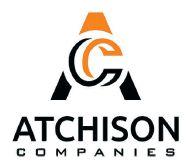
by

continued from page 26
“Renewable resources don’t produce power all the time and so to help maintain that reliability and that constant flow of energy into the grid, we need energy from fossil fuels like coal,” Dahl said. “In fact, they continue to supply most of our energy and really power our modern way of life.”
Project Tundra is estimated to cost approximately $1 billion. The project is currently seeking financial partners to help utilize existing 45Q federal tax credits, which are currently $50 per ton of carbon dioxide that is captured and stored in a geologic formation deep underground or $35 per ton that is captured and used for enhanced oil recovery.

Minnkota has secured up to $15 million from the state of North Dakota’s Lignite Research Fund in 2019 to conduct research and advanced design work on Project Tundra.
The project was recently approved for a $9.8 million grant from the U.S. Department of Energy. This funding would support a Front-End Engineering and Design (FEED) study at the Milton R. Young Station, which includes the advanced design, engineering and evaluation of project economics.
Sen. John Hoeven, R-N.D., said North Dakota is leading the way in developing CCUS technologies. Hoeven recently visited the Energy and Environmental Research Center with DOE officials to talk about the project.
“Developing and deploying this technology is a win both for consumers, who will continue to have access to affordable energy, and for environmental stewardship,” he said in a statement.
Mac McLennan, president and CEO of Minnkota, said Hoeven has been a believer in Project Tundra since day one.
“Project Tundra is a unique opportunity for North Dakota to lead the world in the advancement of carbon capture technologies,” McLennan said in a statement. “This Department of Energy grant will assist us in completing advanced research and engineering design on the project – one of the final steps before deciding whether to move forward and begin construction.”
The Energy & Environmental Research Center at the University of North Dakota is supporting Project Tundra research with analog research known as Project Carbon. The EERC is recognized as one of the world’s leading developers of cleaner, more efficient energy and environmental technologies.
Jason Laumb with the EERC said a report will be filed on their research in December. So far they’ve been learning how to integrate the carbon capture system with the correct type of technology that works with a solution that will react with the CO2.
The EERC is also studying how to safely and securely store that CO2 on the subsurface with potential enhanced oil recovery.
Dahl said Minnkota is grateful for the partners it has on the project, both private and public.
“This has been a great story in the way of partnerships through not only private industry leadership, but leadership at the state and federal level,” Dahl said. “Our delegation has been very instrumental in helping to prioritize some of these projects through the DOE budget. As a result, the state of North Dakota, despite some very difficult budget cycles for the last four or five years has prioritized research and development and has really stepped in to match those federal grants as well.”
Minnkota is wrapping up a feasibility study to do solution testing for the project. Testing has been done in the lab and on-site and Dahl says the results have been encouraging thus far.

Our multidisciplinary team of over 200 provides practical, pioneering solutions to the world’s energy and environmental challenges.
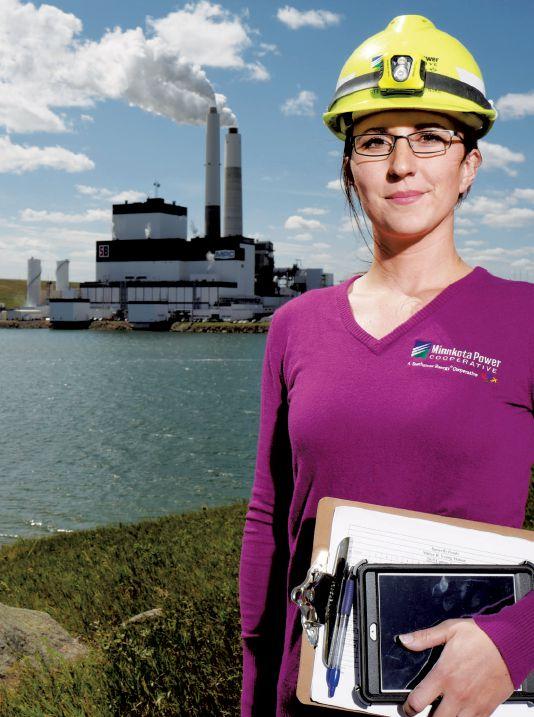
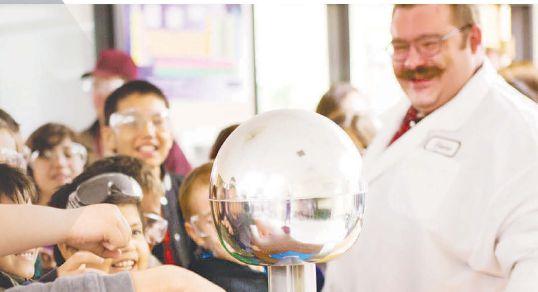



www.undeerc.org



TheONE teamhasprovided engineeringservices for 8,000+ projectsinour region.

We’rea company withheart. We’re engineers. We’re designers. We’rethe peoplebehindthe building systems. We design foryou. We design withpride.

b r ookings, S.D.-based Query.AI is making waves in South Dakota. The company won the Company of the Year Award from the b r ookings innovation Center in 2018 and placed second in the 2019 Governor’s Giant v i sion Competition.
An important part of the company? Founder and C eo Dhiraj Sharan says it’s the relationship with area universities, where it builds on local talent and also works across the globe in India. This conversation has been edited for length and clarity.

Query.AI is about democratizing cybersecurity. While AI is a long term solution, short term it needs to work alongside cybersecurity analysts to assist them. Query.AI’s product does so by providing a virtualized AI-assistant to help with the cybersecurity monitoring coverage needed by enterprises.
I have been in the enterprise security monitoring space for about 18 years. More specifically, I was involved in the evolution of SIEM - Security Information and Event Management products. I realized that the challenges in enterprise environments having to deal with advanced threats, is becoming a scaling and staffing problem as well. There is a shortage of cybersecurity analysts and most companies are not able to provide adequate coverage to monitor their environment and/or proactively hunt for threats. I wanted to provide technology that can help capture and reproduce cybersecurity monitoring and hunting workflows. Being able to share workflows among peers and partners and collaborate over them, is another way we could help advance the mission. Targeting those goals, I got Query.AI off the ground with assistance from the Research Park in Brookings - our accelerator that helped with funding, state assistance, access to university research connections and student talent.
I have been in the Bay Area in the Silicon Valley for the last 15 years. And then my wife took an opportunity at South Dakota State University as a faculty member and we thought it would be a good change to move to the Midwest and raise kids here. The original idea (to begin the start up) was to start in California, but then I realized that if I move here, it’s actually going to be beneficial in many ways.
One way is that the costs of doing business are much better in South Dakota. And I realized, after coming here that I can get easy access to talent here because we have South Dakota State University, and we have Dakota State University as well. So there are local universities in the region, who are producing good talent with computer science, data science and cybersecurity backgrounds. And yet there aren’t that many high tech companies doing data science, AI or cyber security in this region. So we can tap into that talent and keep our costs low, and still build technology for the startup.
The biggest threat is that it’s getting harder and harder to find threats, and the technologies that are available now are much more advanced. Earlier, it used to be that spam, email was a problem. But then spam was kind of solved with technology, now your email inbox is pretty good at detecting what is spam and what is not. But then after that, came spear phishing attack where the email may be very targeted to you, to your organization, and the splitters don’t catch that kind of thing.
So now, if you look at it, the next stage of attack it can be a deep fake cyber attack where you get a voice message from your boss, and you think it’s your boss, but, you know, that can be completely generated voice, using a publicly known voice of that person.
With technology with AI, attackers are also getting smarter and smarter. So we do have to use AI itself to counter those attacks as well. But so the problem statement, and even the solution, both sides, the complexity is increasing.
We need people with backgrounds in data science, backgrounds in cyber security and backgrounds in computer science. And here it’s actually hard to find a lot of senior experience people with that kind of background. So, the approach we took is that, OK, let’s form partnerships with universities and talk to the professors there. For example, we have our data science advisor who is a professor from math and stats department. We also have a senior team in Bangalore in India. So it is kind of a mix of a senior team, who is working with the more fresh talent that’s coming out of the universities here and working together to build a product.
We are here today because of the status that we got in the beginning. From governor’s office of economic development, we got the Dakota Seed Fund, that helps us hire a student interns. Then we also got proof of concept funds, that helps us start a business. And then we also got the Governor’s Giant Vision Award. Then at the research park, at South Dakota State University, we got an incubation environment. We got help from people like Dwaine Chapel, who runs the Research Park. And Tim Weelborg, who manages the angel funds through its Enterprise Institute. We were recently awarded Company of the Year Award at the Research Park as well.
All of that has been possible with all the support and help that we have got from all these organizations in the state. And I’m really thankful and amazed as well, that there was so much focus in helping and growing startups here.
Baxter, Minn. — Noah Johnson, PE, has joined Widseth Smith Nolting as a civil engineer.
Johnson brings civil, water, and wastewater engineering experience to the team. He has worked with cities, counties, and water and sanitary districts on a range of projects, specializing in mechanical process equipment with a focus on water and wastewater treatment processes; pump, piping, and lift station design; and hydraulic modeling of pumps and pumping systems. He holds a Bachelor of Science in civil engineering from the University of Nebraska-Lincoln.
Steven Stalboerger joins EAPC’s healthcare team as a Senior Architect and Medical Planner. Steve has over 30 years of medical design experience and will be working on multiple healthcare projects within EAPC’s nine office locations across the country. Stalboerger obtained his Bachelor of Architecture degree from North Dakota State University. Noah Fischer joins EAPC as Human Resources and Organizational Development Manager. Noah obtained his undergrad at NDSU with a Bachelor of Science in Psychology and earned his MBA in Human Resource Management from the University of Mary in Bismarck. Fischer brings to EAPC six years of HR experience.
GRAND FORKS -- True North Equipment recently announced that Corbyn Hahn has been hired to work as an HR Generalist at their Resource Center in Grand Forks.
Hahn holds a BBA in Human Resources from University of North Dakota. She is a native of Grand Forks and recently moved back to the area from Washington DC, where she worked in Human Resources at a digital advertising company. Prior to that, Hahn held a Human Resource position with BeMobile Verizon. She was also a familiar face, working at Paradiso in Grand Forks.
True North Equipment is a regional John Deere dealership group with eight locations in Grafton, Grand Forks, Kennedy, Northwood, Warren, Thief River Falls, Mahnomen and Baudette.
Determined by annual revenue, EAPC is a Top 40 design firm in the nation for nonresidential buildings and multifamily buildings work, as reported in Building Design+Construction’s 2019 Giants 300 Report. EAPC, established in 1967, is an award-winning multi-disciplinary design consulting firm with offices in North Dakota, Minnesota, South Dakota, Arizona, and Colorado. EAPC currently employs over 130 professionals. https://www.bdcnetwork.com/top-40engineering-architecture-firms-2019
GRAND FORKS, N.D. -- The Empire Arts Center has hired Nathan Haltiwanger as its new program manager.

Haltiwanger, a native of New York, comes to the Empire Arts Center with a master’s degree in Opera Performance and a wealth of experience in the performing arts and arts education. Empire Theatre Company audiences may also recognize Haltiwanger from the February 2019 production of Next to Normal.
As the new Program Manager, Haltiwanger will oversee all aspects of the Empire Arts Center’s programming, including the Empire Theatre Company, The 1919 Lounge, the new upcoming film series to be launched in January 2020, and more. Beyond programming, Haltiwanger’s duties will also include box office, development and marketing assistance, and more.

Hugo’s Family Marketplace has promoted Richard Hilgemann to the store director position of its Jamestown location.
Hilgemann has worked for Hugo’s for 19 years. He began as dairy manager and most recently was the assistant store director. He has 35 years of experience in the grocery business.
“Richard’s experience in the grocery industry and with various areas of Hugos will be a great asset to that store,” said Kristi Magnuson Nelson, Hugo’s President/CEO. “The store and our associates will all benefit from his leadership and knowledge.”
Moriya Rufer earned her Lake Manager Certification from the North American Lake Management Society, Houston Engineering, Inc. announced in a press release.
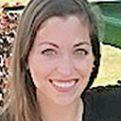
This certification recognizes individuals with special training and experience in the management of ponds, lakes, reservoirs, and other bodies of water, including watersheds. Rufer joined HEI as a Scientist III earlier this year and works remotely from Detroit Lakes, Minn., providing water and environmental solutions to clients across the region.
She has more than 15 years of experience serving the water resources community, specifically working with lakes, watershed planning, and water quality issues.
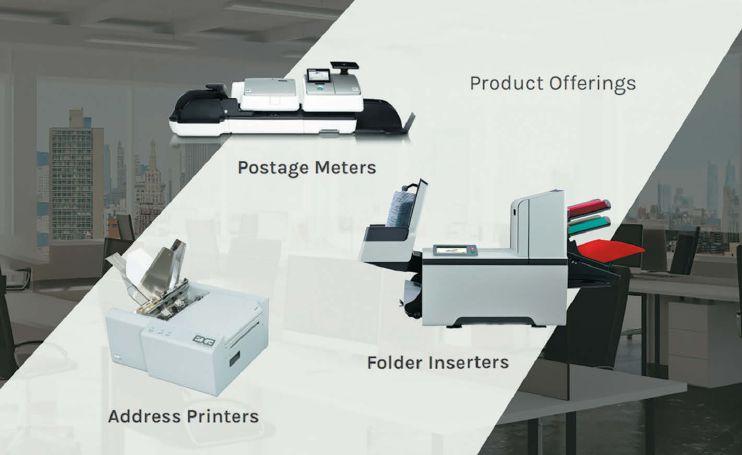





Grand Forks, N.D. -- Altru Health System announces the election of two new members to the board of directors.


William McKinnon, MD, FACEP, Emergency Medicine and Medical Director of Regional Operations at Altru Health System, has been named a member of Altru’s Board of Directors. Dr. McKinnon brings years of medical experience to the board of directors as an emergency medicine physician, clinical assistant professor at the University of North Dakota School of Medicine and advanced life support course instructor, including: Cardiac (ACLS), Pediatric (PALS) and Trauma (ATLS). Dr. McKinnon also supports the training associated with the Rural Trauma Team Development Course He will hold a three-year term.
Daniel C. Roline, Vice Chair, Midwest Region, Provider Relations, Mayo Clinic, has been named as a member of Altru’s Board of Directors. Roline manages the Mayo Clinic Care Network, which is a network of like-minded organizations sharing a common commitment to improving the delivery of healthcare in the U.S. and beyond. Dan’s past work experience includes a variety of leadership roles and business planning activities. Prior to his role at Mayo Clinic, Dan managed a regional ambulance service where he provided pre-hospital care, disaster preparedness consulting, staff development and continuing education.
He will hold a three-year term. Other members of Altru’s Board of Directors include: Kris Compton, Chair; Lonnie Laffen, Vice Chair; Philip Gisi, Secretary; Keith Okeson and Brad Wehe.

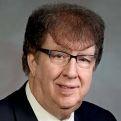

BOTTINEAU, N.D. -- DCB welcomes Carolyn Rygg, Athletic Trainer to campus. Carolyn grew up in St. Thomas, ND before her family moved to Mayville, N.D. where she graduated from May-Port CG High School. Carolyn is a certified and licensed athletic trainer. She is an employee of Trinity Health of Minot.

Carolyn earned her Bachelor of Science in Athletic Training in 2018 from the University of Mary. She then worked as a graduate assistant at the University of Mary for the academic year of 2018-2019. While at University of Mary she worked with the men’s and women’s indoor and outdoor track team along with the men’s soccer team. Carolyn is currently working toward her Master of Education in Physical Education and Athletic Administration with a projected graduation date of April 2020.
Carolyn will work with all seven Lumberjack teams. She will also be the educator of HPER 207 that is available in the spring semester at Dakota College at Bottineau.
Super Studio, a business unit of Flint Group, headquartered in Fargo, has added Tanner Bjorlie and Jacob Erickstad as production artists. Bjorlie and Erickstad will create effective, memorable deliverables to support studio growth and the multi-faceted needs of various clients.
Prior to Super Studio, Bjorlie obtained his bachelor’s degree in graphic design at Minnesota State University Moorhead and Erickstad obtained his bachelor’s degree in marketing at North Dakota State University.
Super Studio is a graphic design and digital production shop focused on helping small to midsize-businesses around the region grow through good design and storytelling.

PLYMOUTH, Minn. -- Dakota Supply Group has promoted Brandon Swenson to Branch Manager of its location in Bismarck. Swenson will be responsible for leading DSG’s Bismarck team as it seeks to provide a world-class customer experience in all day-to-day branch operations.
Swenson joined DSG in 2012 as a Warehouse Associate, and then he joined the Inside Sales team in 2016. Throughout the course of his career, Swenson has been heavily involved in training new DSG employee owners, both on the operations and sales sides of the business.

FARGO -- Red River Commodities has announced the promotion of three employees to Executive Positions.
Mike Kotzbacher has been promoted to Senior Vice President of Red River Commodities. He has held various positions at Red River Commodities over the past 12 years including exports, sales, and most recently managing director of food ingredients.
Curtis Kuntz was named Vice President of Red River Commodities Wildlife. Kuntz began his career at Red River Commodities in 2004 as a Financial Controller. He then moved into Operations for three years and for the past five years has been the managing director of the wildlife division.
Todd Mondry was recently named Vice President of Engineering and Operations. He joined Red River Commodities in 1999 and has held positions in operations and process engineering covering all divisions of Red River Commodities and most recently as director of engineering.


ELLENDALE, N.D. -– ReadiTech is pleased to announce the hiring of several new employees.

Justin Farkas joined ReadiTech as a Senior Sales Account Executive in the Fargo Office.
Chris Bernard recently joined ReadiTech as a web developer in the Fargo office.
Matt Sorenson, Sales Account Executive, works in the Grand Forks ReadiTech office as a Sales Account Executive.
Brian Cox joined ReadiTech as a Network Analyst in the Fargo office.
Stan Sundby recently joined ReadiTech has a Network Analyst in the Fargo office.
Lisa Roberson is based out of our Bismarck office as works for ReadiTech as a web project coordinator.
FARGO, N.D. — Don Campbell has been hired as senior vice president and chief legal officer at Blue Cross Blue Shield of North Dakota (BCBSND).

As chief legal officer at BCBSND, Campbell is responsible for overseeing the legal department, public affairs and the corporate governance committee of the organization. He is further involved in the company’s strategic planning in his role as senior vice president.
Prior to joining BCBSND, Campbell was a partner at an Am Law 200 law firm in Minneapolis where he practiced business and commercial litigation with an emphasis in the areas of health care, pharmaceutical and medical device litigation, as well as ERISA litigation for health plans and their administrators. For more than 20 years he served as first-chair counsel on multiple bench and jury trials, arbitrations and appeals on a nationwide basis. Campbell litigated cases in more than 30 states and federal judicial districts and three tribal courts.
Campbell attained a Bachelor of Arts in economics and international business from Cornell College in Mount Vernon, Iowa, and went on to earn a doctorate in law from The University of North Dakota School of Law in Grand Forks, N.D.
 DJ Campbell CPCU, SHRM-SCP Administrative Services Manager EMC Insurance Companies
DJ Campbell CPCU, SHRM-SCP Administrative Services Manager EMC Insurance Companies
I would say the biggest change I’ve seen is the tightening of talent pools. So much has changed in recruiting over the last decade -- from technology and applicant tracking software to the rise of social media and digital job boards -- the landscape is completely different. Employers no longer have the upper hand in the job search – they have to compete for talent. And, today’s candidates know what they want. This new dynamic makes it more necessary than ever for companies to be relationship driven, transparent, and intuitive to the needs of their potential new team members. Organizations also must be more creative in the ways they attract top talent through purpose driven communication, community reputation, and the engagement of the current team.
The biggest change is access to “ready and available information” for both the candidate and the employer. We can mine for information on a candidate online and through social media platforms, and they have the opportunity to do the same to us as a potential employer. Painting an accurate online picture of our culture and workplace is increasingly important to attracting the right candidates. Social media networks also provide greater opportunity to reach out to candidates who are not necessarily looking for a career change; these are truly the talented candidates that we want to hire.
Also, the application experience has improved significantly in just five years or so. The process used to be a long 20-30 minute sit down, fill in the information, sign this, upload that; now, applicants can simply upload their resume, their LinkedIn profile and provide a few personal information questions and are ready to go – and it can be done from their mobile device.
Eric Wingenbach Recruiting Administrator First
International Bank & Trust





At ConocoPhillips, we recognize that our success depends upon our employees. Each of our employees is empowered and encouraged to actively participate in our culture of innovation and collaboration. How we attract this type of individual and keep them engaged is one of our greatest priorities.
Our historic recruiting efforts for early career individuals have traditionally focused on petro-techncial degreed professionals. In recent years, we have leveraged our success from these traditional recruiting programs to ensure that our efforts cover multiple spectrums of the workforce. In North Dakota, we have developed partnerships with Williston State College and Bismarck State College to fill internship roles in the areas of field operations, such as instrumentation and electrical positions. These roles are pivotal to our success and we hope that these interns will gain foundational knowledge of the energy industry and if given the opportunity, will choose ConocoPhillips for a compelling career.
In addition to recruiting talent from these local programs, we are involved with the Industry Advisory Council at UND’s School of Engineering and Mines. Our employees offer guidance and expertise to ensure that North Dakota has a highly-skilled, technical workforce equipped to sustain future generations. It is a privilege to operate in North Dakota and we are committed to looking within the four corners of our state to support our workforce.
The strategy of recruitment today compared to recent decades is the philosophy of active recruitment (sourcing) compared to passive (waiting for an applicant to apply). Social media and job boards are active ways we recruit, and it’s important to come up with new ways to brand, sell and market our positions with the variety of generations in today’s workplace.
We have increased our focus on talent development for candidates who align to our organizational values which we assess through a behavioral-based interview experience. At Altru we involve leaders and peers in hiring decisions and include shadowing experiences whenever possible. This approach models our team-based care approach to service, focuses on employee engagement, while meeting the needs of our candidates so they can make a well-informed employment decision. Additionally, it’s important for organizations to be focused on first impressions all the way through an individual’s hiring, onboarding and orientation experience. Today’s employee is focused on professional growth, making a difference, having meaningful connections, flexible scheduling and work environments, as well as recognition and being informed. At Altru we are continually soliciting feedback from our patients and our team members as they support a continuous improvement focus that prepares us for the future while fulfilling our daily mission.
Year-over-year change in monthly value of construction starts; MN, MT, ND, SD
Disparities in income and wealth among older households have become greater over the past 3 decades, according to the Government Accountability Office’s analysis of Survey of Consumer Finances (SCF) data. GAO divided older households into five groups (quintiles) based on their income and wealth. Each year of data in the analysis, and, thus, each quintile, included different sets of households over time. Average income and wealth was generally higher over time, disproportionately so for the top quintile (top 20 percent). For example, in 2016, households in the top quintile had estimated average income of $398,000, compared to about $53,000 for the middle quintile and about $14,000 for the bottom quintile. GAO also found that for quintiles with lower wealth, future income from Social Security and defined benefit pensions provide a relatively significant portion of resources in retirement for those who expect such income.
starts, by month; MN,
Recently the Ninth District economy saw a modest bounce higher, according to current business conditions reported by the Federal Reserve Bank of Minneapolis in its most recent Beige Book, released July 17 (and covering a period from mid-May to very early July). In particular, it noted that commercial and residential construction in the district rebounded after several slower months. Employment grew modestly, while wage and price pressures remained steady.
The first four months of the year were somewhat soft for construction in the Ninth District, the report stated. Overall levels have been relatively healthy—most industry contacts confirmed that they have solid backlogs—but total activity has been below comparable periods in 2017 and 2018. That changed in May, when the value of construction starts saw a notable uptick.
ESTIMATED PROPORTION OF OLDER AMERICANS AGES 51 TO 61 IN 1992 STILL LIVING IN 2014, BY MID-CAREER HOUSEHOLD EARNINGS



